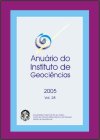Terrestrial locomotion in pterossauros: a brief revision of literature
DOI:
https://doi.org/10.11137/2005_1_35-48Abstract
The pterosaurs had been the first reptiles to fly, however its locomotion in land still are partially unknown and in debate. In history many models had been adopted by them, but, only recently a unique model has being accepted. This work carries through a bibliographical revision on the terrestrial locomotion. The anatomical characteristics of the pterosaurs determine quadruped characteristics like bipedal, as seen by the authors. The feet, the pélvis and the vertebral column would have a capacity to support both models, initially contradictory for its structures. The wings were used in terrestrial locomotion for the pterosaurs, as the ichnofossil leave little doubt. In contrast of that it was postulate for many authors, the wing would have a more important function, since, the gravity center if found forward. In spite of does not have evidences of the real use of the tails in the deambulation, even so its use was possible. Footprints that also indicate bipedal advance or of scaling never had been found what it becomes these possible but not proven forms of locomotion. Thus, the pterossauros could assume a half-erect and plantigrad quadruped position when in low speeds or in rest, and high speed it would assume a digitigrad position bipedal. It is possible, also the presence of fossil registers of terrestrial locomotion of pterosaurs in Brazil, since none was never found and here they meet one of the best fossiliferous basins of pterosaurs of the world. The real determinative factor of which model they would still use are not proven, but new studies and new evidences to establishing a definitive model for these magnificent flying reptiles.Downloads
Download data is not yet available.
Downloads
Published
2005-06-01
How to Cite
Moraes, M. L. de (2005) “Terrestrial locomotion in pterossauros: a brief revision of literature”, Anuário do Instituto de Geociências. Rio de Janeiro, BR, 28(1), pp. 35–48. doi: 10.11137/2005_1_35-48.
Issue
Section
Article
License
This journal is licensed under a Creative Commons — Attribution 4.0 International — CC BY 4.0, which permits use, distribution and reproduction in any medium, provided the original work is properly cited.















